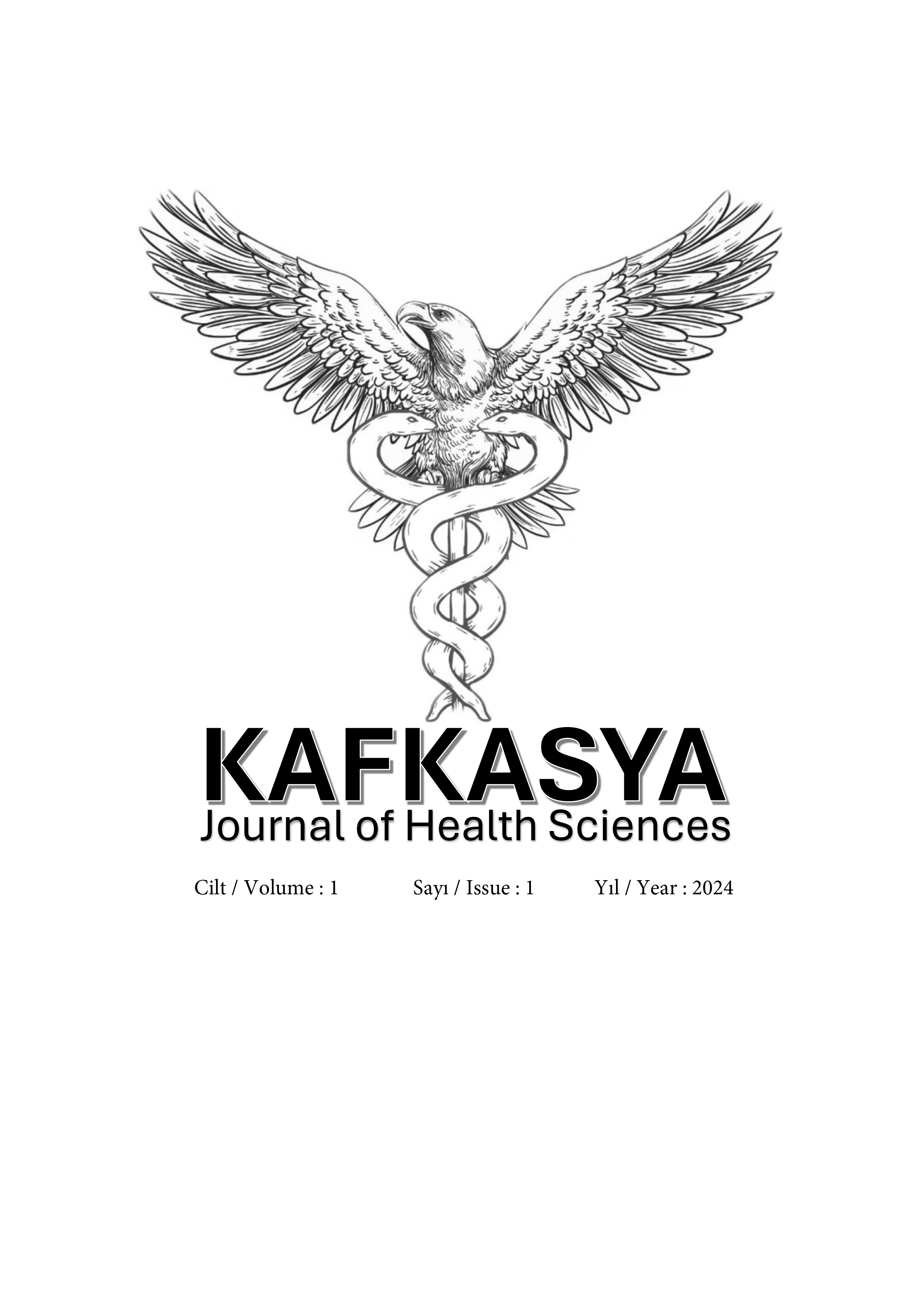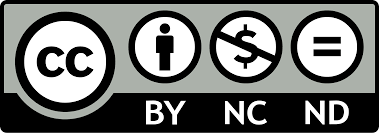Optogenetik ve Kasların Işıkla Kontrolü
DOI:
https://doi.org/10.5281/zenodo.12510731Anahtar Kelimeler:
Canlı hücreler, Kontrol, Kas, Işığa duyarlı proteinler, OptogenetikÖzet
Optogenetik, genetik ve optik araçlar kullanarak canlı hücrelerin, özellikle de nöronların aktivitelerini ışıkla kontrol eden bir tekniktir. Bu yöntem, belirli hücre gruplarının elektriksel aktivitelerini hassas bir şekilde modüle etmeyi sağlar Optogenetik sadece sinir hücrelerinin değil, kas hücrelerinin de kontrolü için kullanılabilir. Bu süreç, genetik olarak modifiye edilmiş kas hücrelerinin ışığa duyarlı proteinler (örneğin, kanalrhodopsin-2 veya halorhodopsin) eksprese etmesiyle gerçekleştirilir. Işığa duyarlı proteinleri kodlayan genler, kas hücrelerine taşınır. Bu işlem genellikle viral vektörler aracılığıyla yapılır
Referanslar
Adamantidis, A. R., Zhang, F., Aravanis, A. M., Deisseroth, K., & De Lecea, L. (2007). Neural substrates of awakening probed with optogenetic control of hypocretin neurons. Nature, 450(7168), 420-424.
Ben-Ari, Y. (2002). Excitatory actions of gaba during development: the nature of the nurture. Nature Reviews Neuroscience, 3(9), 728-739.
Deisseroth, K., Feng, G., Majewska, A. K., Miesenböck, G., Ting, A., & Schnitzer, M. J. (2006). Next-generation optical technologies for illuminating genetically targeted brain circuits. Journal of Neuroscience, 26(41), 10380-10386.
Govorunova, E. G., Gou, Y., Sineshchekov, O. A., Li, H., Lu, X., Wang, Y., ... & Spudich, J. L. (2022). Kalium channelrhodopsins are natural light-gated potassium channels that mediate optogenetic inhibition. Nature neuroscience, 25(7), 967-974.
Han, X., Qian, X., Bernstein, J. G., Zhou, H. H., Franzesi, G. T., Stern, P., ... & Boyden, E. S. (2009). Millisecond-timescale optical control of neural dynamics in the nonhuman primate brain. Neuron, 62(2), 191-198.
Häusser, M. (2014). Optogenetics: the age of light. Nature methods, 11(10), 1012-1014.
Herlitze, S., & Landmesser, L. T. (2007). New optical tools for controlling neuronal activity. Current opinion in neurobiology, 17(1), 87-94.
Kishi, K. E., Kim, Y. S., Fukuda, M., Inoue, M., Kusakizako, T., Wang, P. Y., ... & Kato, H. E. (2022). Structural basis for channel conduction in the pump-like channelrhodopsin ChRmine. Cell, 185(4), 672-689.
Kuhne, J., Vierock, J., Tennigkeit, S. A., Dreier, M. A., Wietek, J., Petersen, D., ... & Gerwert, K. (2019). Unifying photocycle model for light adaptation and temporal evolution of cation conductance in channelrhodopsin-2. Proceedings of the National Academy of Sciences, 116(19), 9380-9389.
Mahn, M., Gibor, L., Patil, P., Cohen-Kashi Malina, K., Oring, S., Printz, Y., ... & Yizhar, O. (2018). High-efficiency optogenetic silencing with soma-targeted anion-conducting channelrhodopsins. Nature communications, 9(1), 4125.
Oesterhelt, D., & Stoeckenius, W. (1971). Rhodopsin-like protein from the purple membrane of Halobacterium halobium. Nature new biology, 233(39), 149-152.
Ronzitti, E., Ventalon, C., Canepari, M., Forget, B. C., Papagiakoumou, E., & Emiliani, V. (2017). Recent advances in patterned photostimulation for optogenetics. Journal of Optics, 19(11), 113001.
Schneider, F., Grimm, C., & Hegemann, P. (2015). Biophysics of channelrhodopsin. Annual review of biophysics, 44, 167-186.
Sineshchekov, O. A., Govorunova, E. G., Li, H., & Spudich, J. L. (2017). Bacteriorhodopsin-like channelrhodopsins: Alternative mechanism for control of cation conductance. Proceedings of the National Academy of Sciences, 114(45), E9512-E9519.
Sugıyama, Y., & Mukohata, Y. (1984). Isolation and characterization of halorhodopsm from Halobacterium halobium. The Journal of Biochemistry, 96(2), 413-420.
İndir
Yayınlanmış
Nasıl Atıf Yapılır
Sayı
Bölüm
Lisans
Telif Hakkı (c) 2024 Defne Meriç ULUÇAM

Bu çalışma Creative Commons Attribution 4.0 International License ile lisanslanmıştır.
Dergimizde yayımlanan makaleler, Creative Commons Attribution-NonCommercial-NoDerivatives 4.0 International (CC BY-NC-ND 4.0) ile lisanslanmıştır.
Şunları yapma özgürlüğüne sahipsiniz:
- Paylaşın — materyali herhangi bir ortamda veya formatta kopyalayın ve yeniden dağıtın
- Lisans veren, lisans şartlarına uyduğunuz sürece bu özgürlükleri geri alamaz.
Aşağıdaki şartlar altında:
- Atıf — Uygun şekilde atıfta bulunmalı , lisansa bir bağlantı sağlamalı ve değişiklik yapıldıysa bunu belirtmelisiniz . Bunu makul bir şekilde yapabilirsiniz, ancak lisans verenin sizi veya kullanımınızı onayladığı izlenimini verecek şekilde yapamazsınız.
- Ticari Olmayan — Materyali ticari amaçlarla kullanamazsınız .
- Türevsiz — Malzemeyi yeniden karıştırır, dönüştürür veya üzerine inşa ederseniz , değiştirilen malzemeyi dağıtamazsınız.
- Ek kısıtlamalar yok — Lisansın izin verdiği herhangi bir şeyi başkalarının yapmasını yasal olarak kısıtlayan yasal şartları veya teknolojik önlemleri uygulayamazsınız .
Duyurular:
Kamu malı olan veya kullanımınızın geçerli bir istisna veya sınırlama tarafından izin verildiği materyalin unsurları için lisansa uymanız gerekmez .
Hiçbir garanti verilmemektedir. Lisans, amaçladığınız kullanım için gerekli tüm izinleri sağlamayabilir. Örneğin, tanıtım, gizlilik veya manevi haklar gibi diğer haklar , materyali nasıl kullanacağınızı sınırlayabilir.
Fark etme
Bu belge, gerçek lisansın yalnızca bazı temel özelliklerini ve şartlarını vurgulamaktadır. Bu bir lisans değildir ve yasal bir değeri yoktur. Lisanslı materyali kullanmadan önce gerçek lisansın tüm şart ve koşullarını dikkatlice incelemelisiniz.
Creative Commons bir hukuk firması değildir ve hukuki hizmet sunmaz. Bu belgenin veya özetini oluşturan lisansın dağıtılması, görüntülenmesi veya bunlara bağlantı verilmesi, avukat-müvekkil veya başka herhangi bir ilişki oluşturmaz.
Creative Commons, yaratıcıların eserlerini paylaşmalarına olanak tanıyan açık lisansların ve diğer yasal araçların arkasındaki kâr amacı gütmeyen kuruluştur. Yasal araçlarımızı ücretsiz olarak kullanabilirsiniz.



